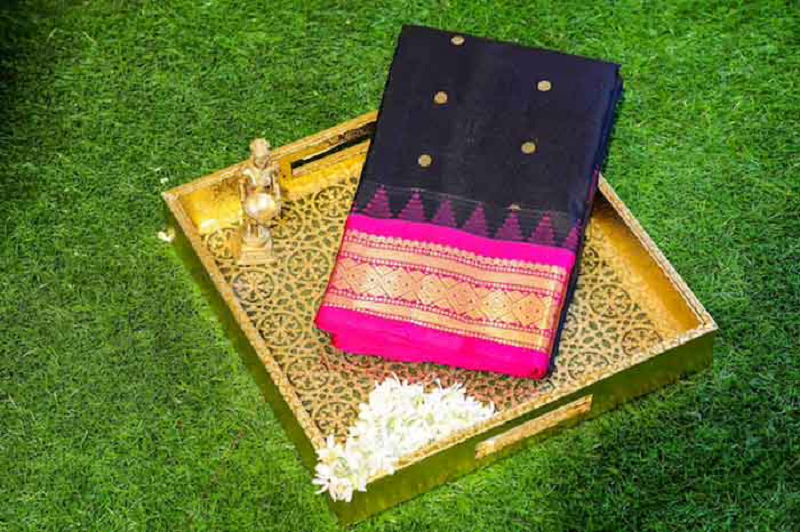Sambalpuri Saree: Every Indian woman has different types of sarees in her wardrobe. From Kanjivaram saree to Jamdani saree, silk saree, Banarasi saree, kalamkari saree, Sambalpuri saree is rarely seen. This is because Sambalpuri sarees are quite expensive. Although, these sarees are quite simple in appearance, equally hard work is required to make them.
This is the reason why Sambalpuri sarees, silk or Kanjeevaram or any handloom saree which gives you an elegant look are priced in lakhs. At the same time, just as it takes several months to make the Patoli silk saree, similarly Kantha work saree and Kanjeevaram saree are also prepared in several days, weeks and months. Similarly, Sambalpuri saree is made in the Indian state of Odisha.
These traditional sarees are hand-woven. So let us tell you some interesting things related to Sambalpuri sarees, after knowing which you will be forced to include them in your wardrobe.

Sambalpuri sarees are hand-woven
Sambalpuri sarees are known for their beauty. The weave, colour and design of this saree are beautifully crafted. Cotton and silk fabric are used to make this saree.
It is designed by hand, in which the warp and weft are tie-dyed before weaving. You will get every kind of variety in Sambalpuri sarees; you just need to know the difference between real and fake sarees.

Sambalpuri sarees are made with tie-and-dye technique
What sets Sambalpuri sarees apart is their hand-woven craftsmanship. Every saree is made with the hard work of skilled artisans, whose design touches the heart. Now you might be thinking that every saree is hand-woven.
What is special about this? Let us tell you that the tie-and-dye technique is used to prepare these sarees and a special type of thread is used.
Sambalpuri sarees are a symbol of culture
Sambalpuri sarees are not just a garment but also a symbol of culture. There are many stories associated with this saree, which perfectly describe the local folklore. The Sambalpuri saree is known for its inclusion of traditional motifs.
It is produced in Bargarh, Sonpur, Sambalpur, Balangir and Buddh districts of Odisha. The colour of these sarees is traditionally red, black and white, after wearing which you will look good.

Keep these things in mind while wearing
- You need to be very careful with the Sambalpuri saree while wearing it.
- When you use safety pins to set the saree, keep in mind that you should not put the pins on the sequence of the clothes, otherwise, they may break from the middle and the saree may get damaged.
- First of all, you have to keep in mind that the threads with the help of which the sequence is stitched on the saree should not break. When this happens sequences may emerge.
- Moreover, the sequences in Sambalpuri saree do not get entangled with each other. Even if this happens, it may break and the saree may get spoiled.
Image Credit- (@Freepik)










